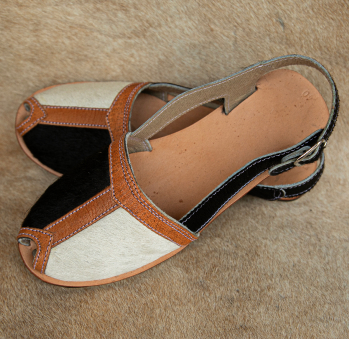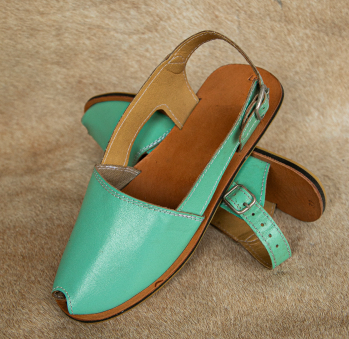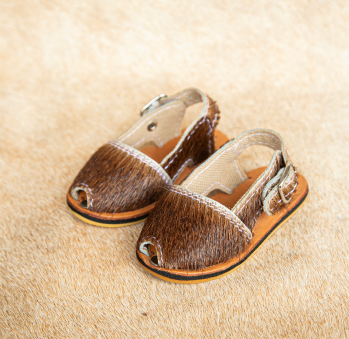Orlando Osorio Leal
Workshop: Artesanías Djorland
Craft: Marroquinería
Trail: Arauca Route
Location: Arauca, Arauca
SCHEDULE YOUR VISIT
Calle 15 # 17-41 Arauca, Arauca
3006901053
artdejorland@gmail.com
@artesaniasdjorland
Despite being born in Santa Marta, far away from Arauca, Orlando Osorio has become an expert and seasoned artisan in crafting cotizas. This type of footwear is quite popular in the Llanos region, used in the traditional Joropo dance. Though they resemble alpargatas, they are made from leather, a widely used material in the area. Orlando encountered cotizas as an adult when he arrived in Yopal after traveling around.
At the age of eight, his family was forcibly displaced by violence, leading them to leave Santa Marta and settle in Villavicencio, Meta. Orlando attended middle and high school and began working with his uncle, a veterinarian. Despite studying Agricultural Marketing, changes in government policies and the implementation of clearing zones drove his uncle into bankruptcy, and forced many to flee. Orlando then traveled north to Bucaramanga, Santander, where he discovered shoemaking for the first time, encouraged by his brother to pursue the craft, despite it not being a tradition in their family.
In 2010, Orlando returned to the Llanos with a good grasp of shoemaking techniques. Initially, he repaired shoes in Yopal until a lady requested him to repair a pair of cotizas. It was a turning point as he saw an opportunity to manufacture this footwear, widely used in the Colombian and Venezuelan Llanos. He started studying and crafting his molds and forms, making his first pair for his nephew, Andrés Camilowho was just four months old. He used his tiny foot as the form and freehand crafted them in brown leather. Later, he would fashion him a pair of haired leather sandals using the same technique, literally, made to measure.
From that moment, Orlando delved deeper into the craft, utilizing the knowledge he had accumulated. Twenty years later, his workshop and shop are brimming with cotizas made from various leathers—smooth, hairy, or synthetic. Though seemingly straightforward, Orlando diversified his styles by combining leather types and adding embroidery. He often includes motifs related to the region such as capybaras, horses, or phrases from Cholo Valderrama’s songs. With his own dies for cutting leather parts and creating personalized embroidery designs, Orlando collaborates with his nephew and niece, who have become integral team members after learning the craft three years ago. He saw an opportunity to provide them with employment and stability.
Only time will tell if Orlando’s craft—the first shoemaker in the Osorio family—will become a tradition and heritage.
Craft




















Artisans along the way
Artisans along the way
No puede copiar contenido de esta página





























































